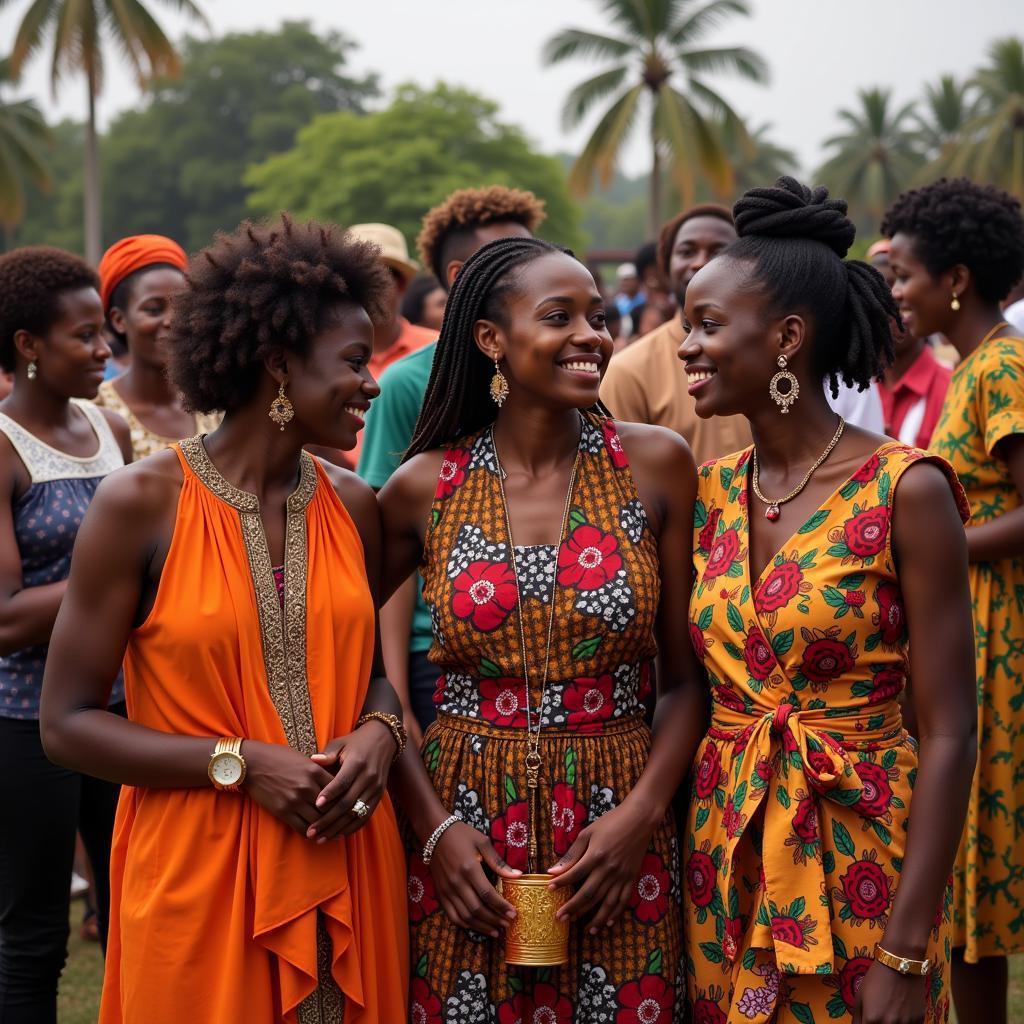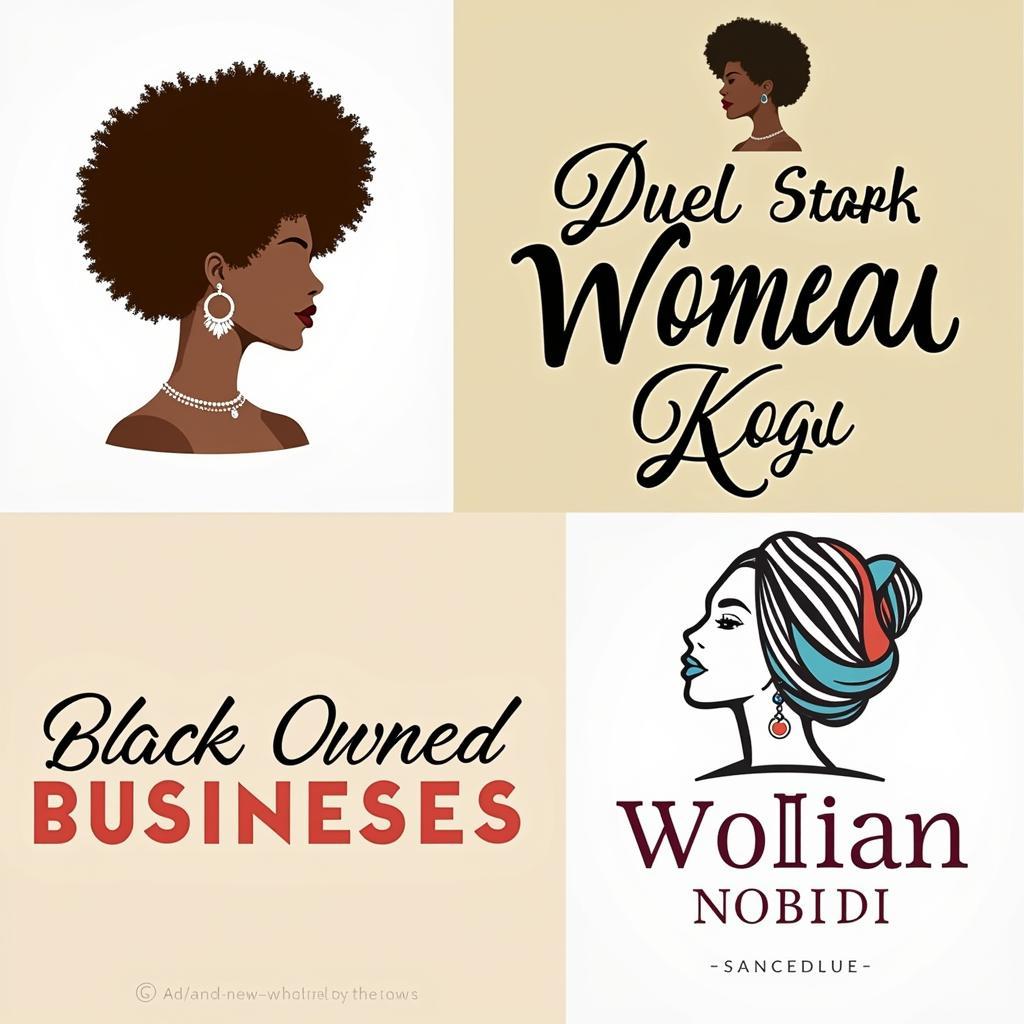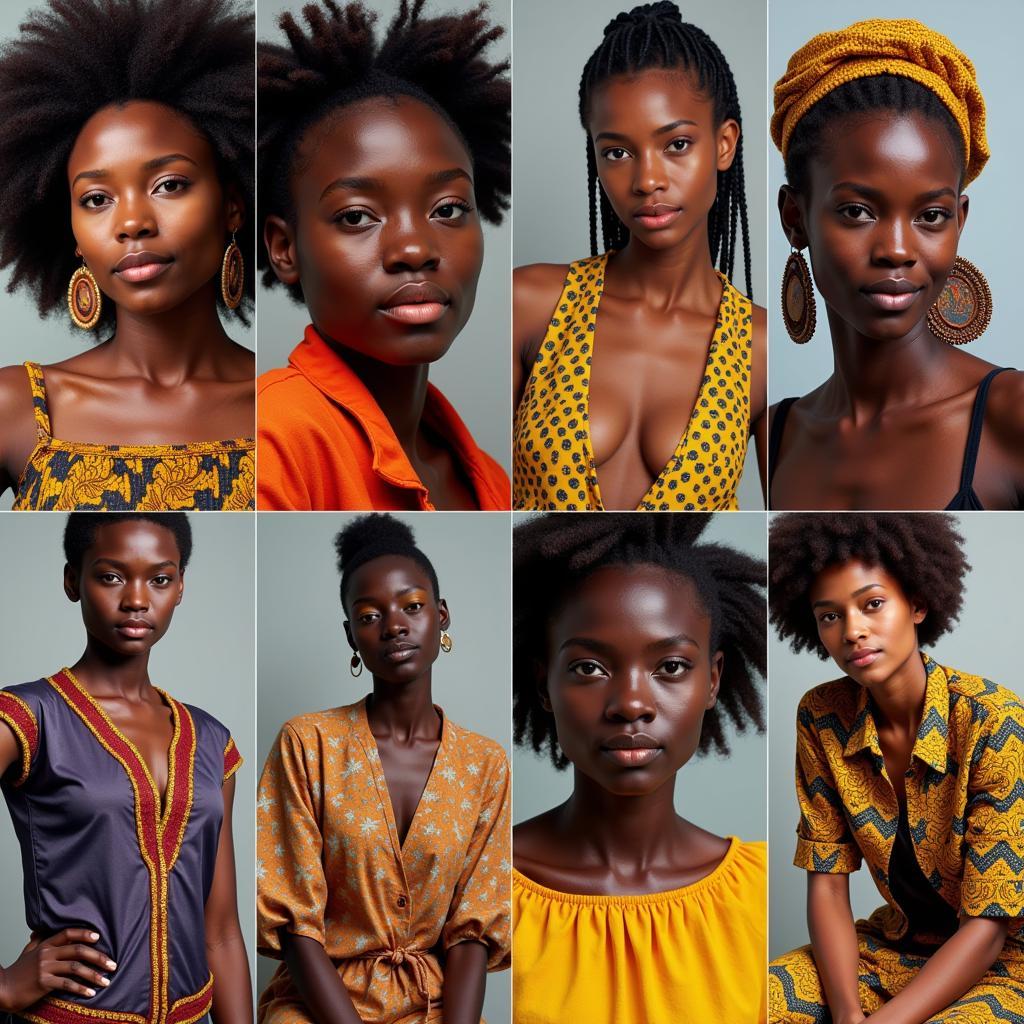Unraveling the Significance of African American Colors
African American Colors hold deep cultural and historical significance, representing far more than just aesthetics. They symbolize resilience, identity, and a rich heritage born from struggle and triumph. From the vibrant hues of Kwanzaa to the powerful symbolism of Black Power, understanding these colors unlocks a deeper appreciation for African American culture. Let’s delve into the rich tapestry of meaning woven within these symbolic shades.
What are the most prominent African American colors and their significance? This exploration will uncover the stories behind colors like red, black, and green, exploring their connections to Pan-Africanism, cultural movements, and individual expression. We will also examine how these colors have been reclaimed and reinterpreted throughout history, becoming powerful emblems of pride and self-determination.
The Pan-African Flag: A Symbol of Unity
The Pan-African flag, a powerful symbol of unity and solidarity, prominently features red, black, and green. Marcus Garvey, a prominent figure in the Pan-African movement, popularized the flag in 1920. Each color carries profound meaning: red symbolizes the blood shed for liberation, black represents the people of the African diaspora, and green signifies the fertile lands of Africa. This flag has become a global emblem of Black pride and the ongoing struggle for equality. The influence of the Pan-African flag extends beyond its visual representation, inspiring art, fashion, and cultural expression within the African American community.
Beyond Red, Black, and Green: Exploring Other Significant Hues
While red, black, and green hold a central place, other colors also hold significance within African American culture. Gold, for instance, often represents royalty, wealth, and spiritual enlightenment. Purple can symbolize pride, independence, and regalness, often associated with Black liberation and royalty in various African cultures. These colors are frequently incorporated into African clothing styles 2017 and traditional garments, reflecting a rich tapestry of cultural influences and historical narratives.
The Role of Color in Kwanzaa Celebrations
Kwanzaa, a week-long celebration of African American culture and heritage, further exemplifies the importance of color symbolism. The colors of Kwanzaa – black, red, and green – echo those of the Pan-African flag, reinforcing themes of unity, self-determination, and cultural pride. Each day of Kwanzaa focuses on a specific principle, represented by a candle of corresponding color.
How are African American colors used in fashion and art?
African American colors have become a powerful form of self-expression in fashion and art, showcasing cultural pride and historical narratives. From incorporating Kwanzaa colors into clothing designs to using gold and purple in jewelry and accessories, these colors are statements of identity and heritage. African American 80s fashion showcased vibrant colors and bold patterns, reflecting a sense of empowerment and cultural affirmation. Artists frequently incorporate these symbolic colors into their work, creating visually striking pieces that tell stories of resilience, struggle, and triumph. African hair style photos often incorporate vibrant colors and accessories that reflect a deep connection to cultural heritage.
Dr. Anika Nkosi, a cultural anthropologist, explains, “Color in African American culture isn’t just about aesthetics. It’s a language, a visual vocabulary that communicates history, identity, and pride.”
The Evolution of Color Symbolism in the African American Community
The meaning of African American colors continues to evolve, adapting to contemporary social and cultural contexts. While rooted in historical struggles and triumphs, these colors now also represent the ongoing pursuit of equality, justice, and social change. They are used in protests, social media campaigns, and artistic expressions to amplify voices, demand change, and celebrate Black excellence. African Bohemian styles, for example, embrace a free-spirited aesthetic while incorporating symbolic colors and patterns that connect to African heritage.
Professor Kwame Asante, a historian specializing in African American Studies, notes, “The dynamism of African American color symbolism lies in its ability to simultaneously honor the past and inspire the future. These colors are a living testament to the enduring spirit of a people.”
Conclusion: A Vibrant Tapestry of Meaning
African American colors are more than just hues; they are a vibrant tapestry woven with history, resilience, and cultural pride. Understanding the significance of these colors provides a deeper appreciation for the rich and complex narrative of the African American experience. From the Pan-African flag to the celebratory hues of Kwanzaa, these colors continue to resonate with meaning, inspiring generations to embrace their heritage and strive for a more just and equitable future. African American wall art and decor provides another powerful medium for expressing cultural identity and celebrating heritage through the use of symbolic colors.
FAQ
-
What are the primary colors associated with African American culture?
- Red, black, and green are the most prominent colors, often associated with the Pan-African flag.
-
What do the colors on the Pan-African flag symbolize?
- Red symbolizes the blood shed for liberation, black represents the people of the African diaspora, and green signifies the fertile lands of Africa.
-
How are these colors used in Kwanzaa?
- Each day of Kwanzaa, a candle corresponding to one of the colors (black, red, and green) is lit, representing a specific principle of the Nguzo Saba.
-
What other colors hold significance in African American culture?
- Gold and purple are also significant, representing royalty, wealth, and spiritual enlightenment.
-
How has the meaning of these colors evolved over time?
- While rooted in history, these colors now also represent contemporary struggles for social justice and equality.
-
How can I learn more about African American history and culture?
- Numerous resources, including books, museums, and online platforms, offer valuable insights into African American history and culture.
-
Where can I find examples of African American art and fashion incorporating these colors?
- Art galleries, museums, fashion shows, and online platforms showcase the creative use of these colors in various forms of expression.
Other Questions We’ve Answered:
- What is the history of Juneteenth?
- What are the key figures in the Civil Rights Movement?
- How does African American music reflect cultural experiences?
Need more information? Contact us at +255768904061, kaka.mag@gmail.com, or visit us at Mbarali DC Mawindi, Kangaga, Tanzania. Our customer service team is available 24/7.




